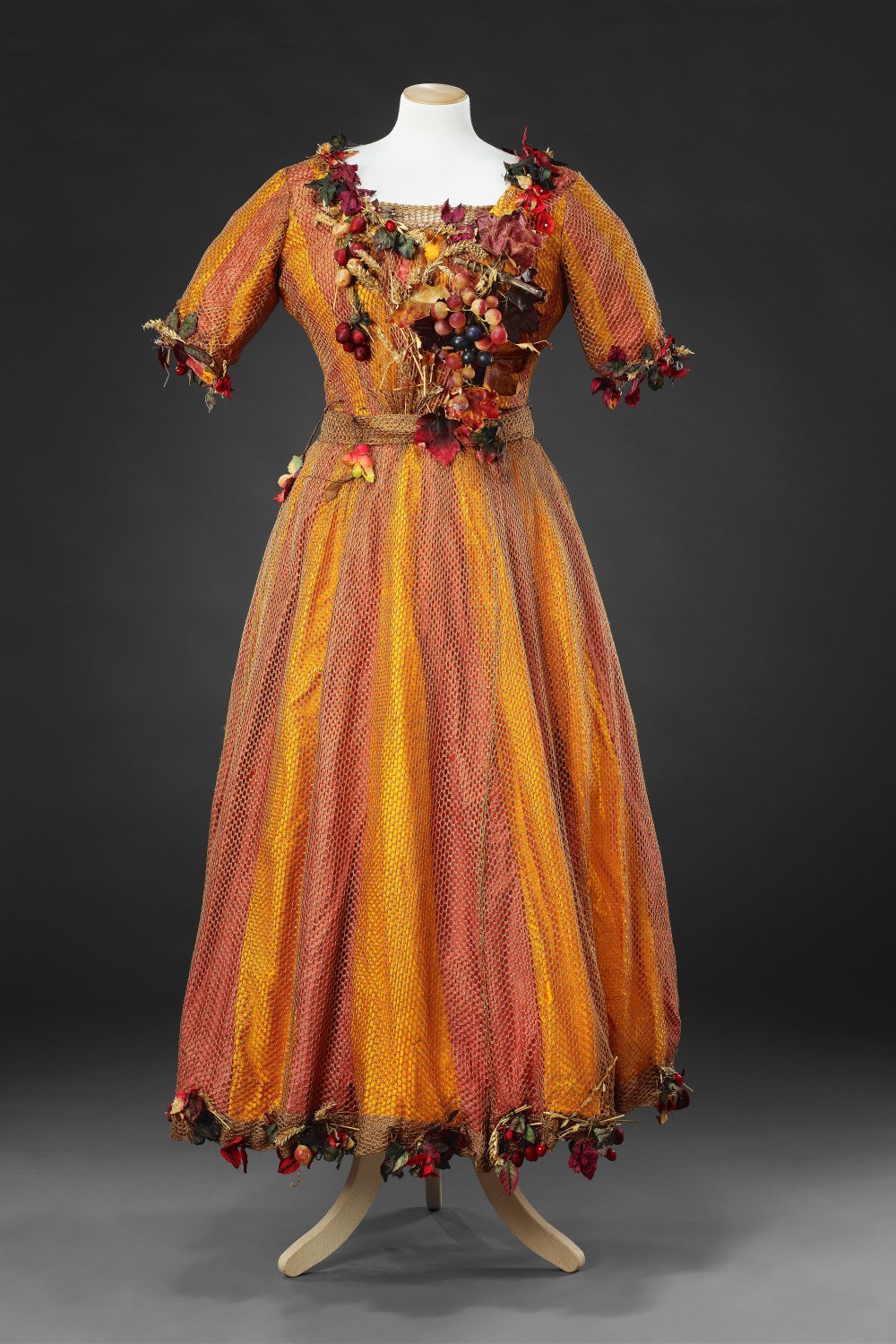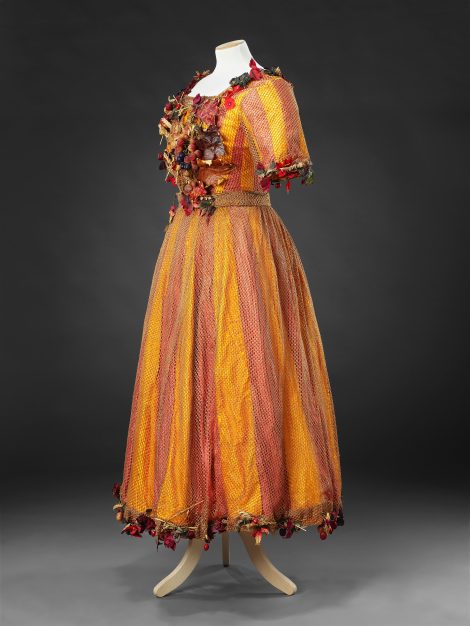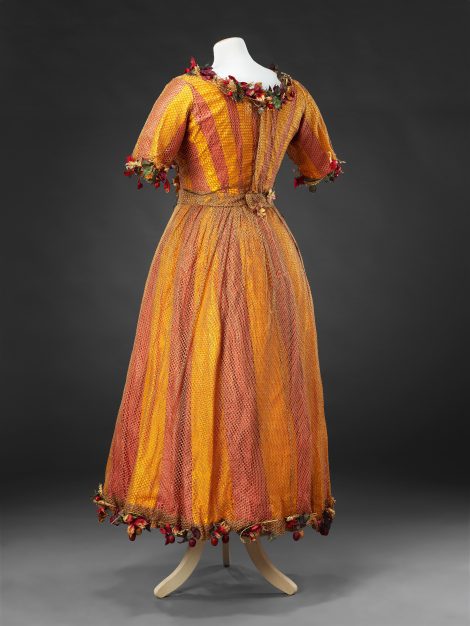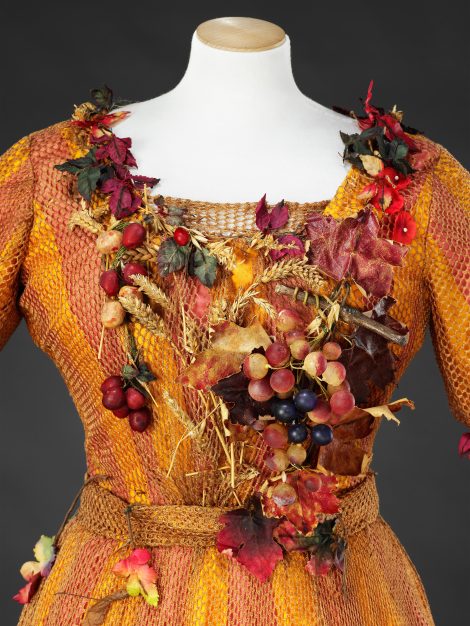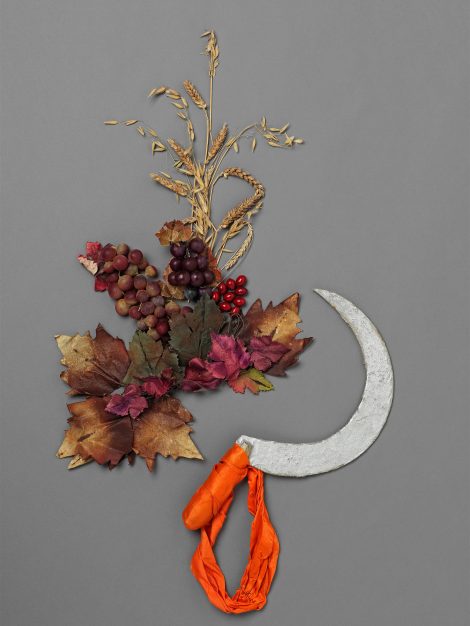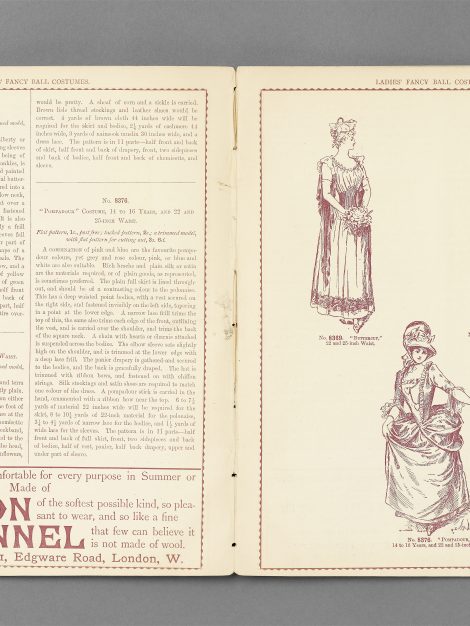The enthusiasm for fancy dress balls, parties and other entertainments that grew throughout the 19th Century continued well into the following century. Aristocratic guests at the grand society costume balls held during this period often favoured outfits based on historical, mythological or literary characters, having access to images in family portraits, paintings, and illustrated books that they were able to have professionally interpreted by their tailors and court dressmakers. Many middle class women, for whom the making of fancy dress was a domestic pastime, took an enthusiastic creative approach, considerably aided by the publication of catalogues that offered dressmaking patterns for amusing abstract themed costumes, along with those of more conventional characters. This two-piece dress, made from gold mesh over broad bands of terracotta and golden yellow cotton possibly suggesting furrowed fields of stubble, represents Harvest. It is profusely decorated with bunches of grapes, berries, ears of corn, poppies and autumnal foliage. It was probably an ambitious, but inexpensive home-made project. Unused trimmings and remnants of cotton (one printed at the selvedge with the brand name ‘Silvasheen’, a low-priced sateen lining fabric widely available in 50 colours) survive with it. Although fairly roughly constructed by hand and machine, each band of colour has been painstakingly cut and seamed together, possibly with the guidance of a dressmaking pattern. The accompanying sickle, seen as an Additional Image, is made of board, crudely painted in silver to imitate metal.
Additional Images also illustrate an earlier design for a Harvest or Gleaner outfit in Mrs Leach’s Fancy Ball Costumes catalogue, published in the 1880s.
